Propeller Selection Basics
Category: npaa
Sep 30th, 2011 by OutdoorsFIRST
Modified Sep 30th, 2011 at 12:00 AM
Yamaha Boaters Log
Choosing the best propeller for your boat isn’t nearly as complicated as it may seem. A boat’s weight, its hull style, how much horsepower is on the transom, and the captain’s performance goals (slow trolling, pulling kids on tubes, being the first to reach a hot fishing spot in a tournament, fuel conservation, etc.) influence the type and size of propeller for a given boat.
It’s really not much more complex than that.
We’re intentionally addressing prop choice very generically for brevity. It’s up to you to consult with your local dealer or prop shop to find the exact size wheel for your individual situation. We strongly recommend trying as many different propellers as possible before swiping your credit card. There is no substitute for on-water testing.
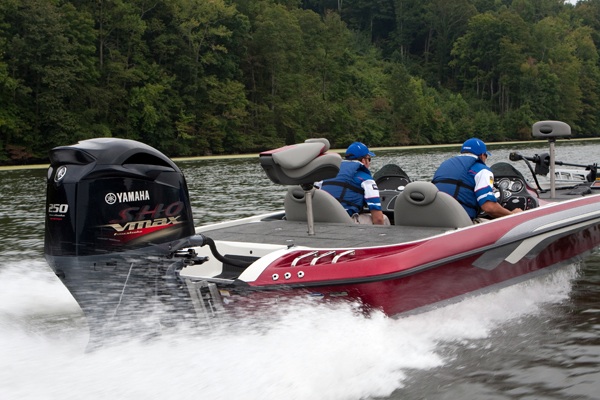 |
|
|
|
Just a Couple Questions
Propeller selection boils down to a few simple questions. The first question flags the props that could be suitable for your application and guides you toward appropriate propeller series (or “families”). The second question further narrows the field to specific types, and potential size ranges of propellers that could do the job. OK, here we go.
What Kind of Boat do You Have?
Large boat (27′ and longer) = heavy boat
o Multiple engines
o Express cruisers, walkarounds, deep-V center consoles (hardcore offshore fishing type)
Medium Boat (20′-26′ long) = middle-weight boat
o Single or twin engines
o Multi-species fishing boats, some center consoles, walk-around cuddy cabins, day cruisers
Small boat (less than 20′ long) = mid-weight to light boat
o Single engine
o Modified V hulls typically used for fishing, boats using tiller handle steering, and jon boats
Family and watersports boats = typically a middle-weight boat
o Single engine
o Fish ‘n’ skis, bowriders, runabouts, deck boats, and pontoons
Bass/Bay/Flats boats = mid-weight to light boat
o Single engine
o High performance hull design
o Mission-specific machine for fishing in these specialized environments
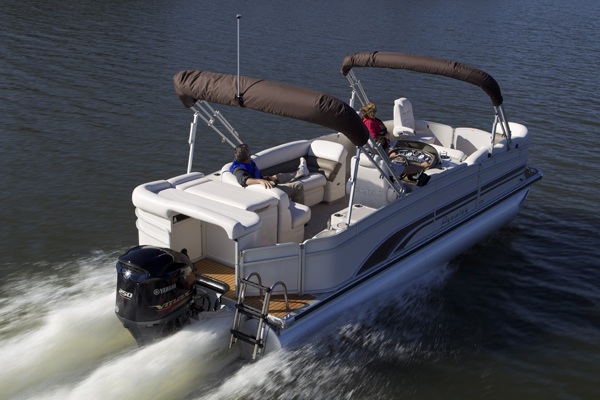 |
|
|
|
How Do You Use Your Boat?
The way you use your boat plays a major role in which propeller will help you make the most of your time on the water. In other words, what do you want-or need-the most in terms of your boat’s performance?
Acceleration/pulling power – Flats boats need to plane immediately; watersports enthusiasts crave the rush of a consistently strong pull; big boats require pushing power and torque to get over the hump and underway.
Mid-range cruising/fuel economy – Owners of larger boats with big engines are usually concerned with going as far as possible on a gallon of fuel, so this an important part of their boating experience.
Top Speed – Bass boats, as well as many flats boats, are obsessed with top speed; getting to the fish first is very important to these captains.
Good overall performance – The propeller lets the boat do what it’s supposed to do: gets and stays on plane well, accelerates respectably, cruises comfortably and economically, and attains a decent full-throttle speed; all with an average-to-full load for your type of boat.
Great overall performance appears to be the logical choice, and is quite doable for boaters who own general-purpose boats and just want to have fun on the water.
However, for those who consider themselves more-than-casual captains, propeller selection is more often than not a compromise. Rarely can you find a wheel that will deliver intense acceleration and blistering top speed – you can have one or the other, but seldom both.
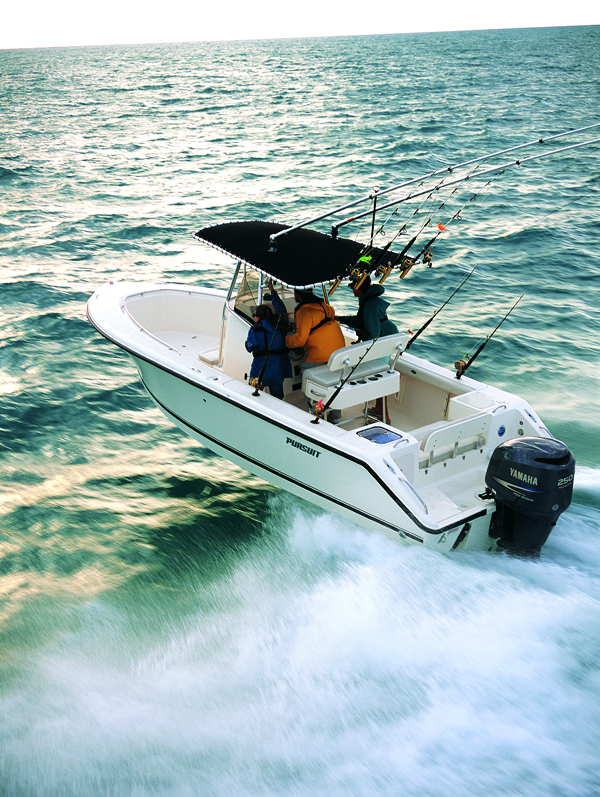 |
|
|
|
A Few Propeller Insights
1. A propeller’s “blade surface area” directly affects a boat’s acceleration. For most props, achieving more blade surface area is done by increasing the propeller’s diameter. Taking a bit of literary license, diameter carries the weight of the boat, and creates “push” by muscling huge volumes of water to transform the vessel from a static into a moving object. Large diameter propellers generate more pushing power – thrust – than smaller diameter props.
Heavy boats regularly use large diameter wheels to get on plane and stay on plane at midrange cruising speeds; middleweight and light boats tend to run props with less diameter in pursuit of ideal performance.
2. A propeller’s pitch relates directly to a boat’s speed. The higher pitch propeller an engine can turn (while maintaining the outboard’s proper wide-open throttle WOT rpm parameters), the faster the boat will go.
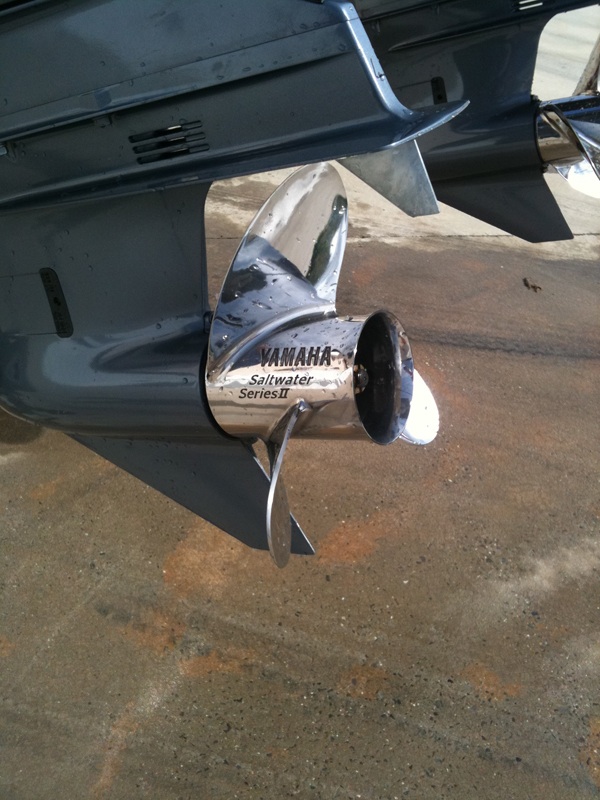 |
|
|
|
On most pleasure boats, a low pitch propeller may make the boat jump on plane and accelerate well, but could either exceed the engine’s maximum rpm and/or not be particularly fast at full throttle.
Conversely, a high pitch prop can be slow to plane and have lackluster acceleration; however, the big wheel might throw down some impressive top speeds (if the engine has the power to run within its max WOT rpm range). On paper, pitch=speed.
What About Four-Blade Propellers?
Remember “blade surface area” we just mentioned? Nearly all four-blade propellers have more blade area than three bladed props. Therefore, on most boats, four-blade props accelerate better than comparable three-blade wheels, because the fourth blade adds more area for better “grip.” This makes a four-blader an excellent choice when you’re looking for better acceleration and need to stay hooked up in tight turns and rough water – especially in following seas.
Four blade propellers use additional horsepower to do all these wonderful things, affecting fuel economy (better on some boats, less on others), and are usually slightly slower on the big end. For certain applications, the benefits can offset the potential drawbacks.
Weighty Reality
Any boat’s performance (or lack thereof) is directly related to its gross weight (completely loaded, including full fuel tanks, livewells, gear – everything) and the amount of horsepower available.
This is important: A big, heavy boat with a little engine has a low power-to-weight-ratio; a light boat with a big engine has a high power-to-weight-ratio.
In the real world, boats vary from one extreme to the other – and this is a major factor in the propeller selection process. That’s why you’ll be asked what kind of boat you have and how much power is on the transom – it’s a tactful way to determine if your boat has the intestinal fortitude for an appreciable performance improvement.
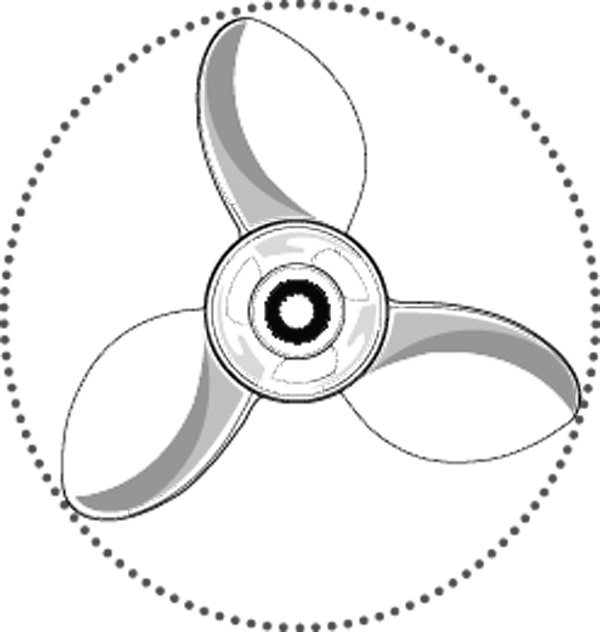 |
|
|
|
Thankfully, there has never been a better selection of propellers to meet almost any captain’s performance goals (within reason), on nearly every boat, no matter what the weight or horsepower.
Continuing Education
We’ve hit the high points of the propeller selection process, hopefully enough that you’ll want to come back to increase your prop knowledge.
You can look forward to learning about which propellers may work well on your own boat through real-world examples gleaned from Yamaha’s performance testing.
Resources
Precision Propeller Industries, Inc
www.turbo-props.com
Yamaha Motor Corporation, USA
www.yamaha-outboards.com